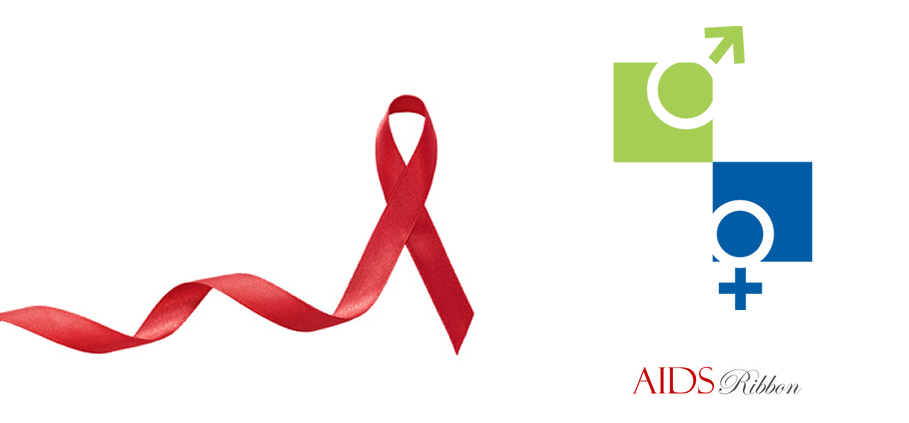Latest News
Contraceptive Methods – Pros and Cons
Anastasios D. Kalantzis, Surgeon Urologist-Andrologist
With the term "contraception" we refer to the use of practices, devices or medication in order to prevent or reduce the possibility of pregnancy. The contraceptive methods are often used as a means of family planning.
The history of contraceptive methods began when man discovered or realized the relationship between sexual intercourse and pregnancy. Among the most ancient contraception forms were interrupted intercourse (coitus interruptus), pessaries and herbs that prevented pregnancy or caused its termination and the abortion of the fetus. Birth control is well documented in Mesopotamia and Ancient Egypt. The most ancient document of a contraceptive method is a series of ancient Egyptian guidelines for the manufacture of a contraceptive pessary. One of the first texts explicitly referring to birth control methods is the Kahun Gynecological Papyrus (part of the Kahun Papyri, a collection of text discussing various topics) dated to 1825 B.C. approximately.
Interrupted intercourse is probably the oldest contraceptive method. This technique, however, is not a reliable contraceptive method. There are historical texts mentioning women that used a pessary (vaginal suppository) made of various acid substances and honey or oil as a lubricant, which was considered to have an effective spermicidal action.
However, sperm was discovered in the 17th century by Antonie Van Leeuwenhoek, when he invented microscope, and it was then proved that the contraceptive methods previously used were not always sufficient and effective. The condom first appeared around the 17th century. It is said that women used paper infused in oil in Asia and bee honey in Europe as a method of sperm barrier.
Several types of medications have been used through the centuries, for the purpose of interrupting pregnancy (abortion). However, the most effective of them had also the most serious side effects. Some of these medications were made of plants and herbs. One of these plants, which was considered to have the fewest side effects, was silphium and it was collected so intensely until it became extinct. Other women used to drink solutions containing mercury or arsenic or other toxic substances for this purpose. The Greek doctor Soranus, in the 2nd century a.D. suggested that women drink the water that blacksmiths used to cool metals.
The attitude of societies and religions towards contraceptive methods vary significantly. "Genesis" and the "Talmud" describe specific contraceptive methods.
The various religions have great differences regarding the moral aspect of birth control.
The Roman-Catholic Church accepts only the Natural Family Planning methods", while the Protestants have a wide range of views and opinions. Hindus are allowed to use both natural and artificial contraceptives. The Buddhist view on birth control concerns prevention of conception as morally acceptable, does not accept, however, intervention after conception. In Islam, contraceptives are allowed provided they do not pose threat to the individual's health, although their use is discouraged by some. There are no explicit statements regarding the morality of contraception in the Koran; on the contrary, it contains statement encouraging procreation. Prophet Mohamed is considered to have said "marry and procreate".
In many countries of Western Europe the population is declining. The feminist movement has affected western societies not only as regards the lifestyle, but also regarding the procreation rights of women, i.e. their right to make their own, personal decisions concerning pregnancy (including the use of contraceptives as well as abortion).
However, no contraceptive method is 100% effective. The effectiveness of the various contraceptive methods depends on many factors, such as the woman's age, the frequency of the sexual encounter, the kind of contraceptive method used etc.
The main categories of contraceptive methods are the following:
- Natural methods
- Barrier methods
- Intrauterine Spirals
- Hormonal methods
- Surgical methods
NATURAL METHODS:
> Breastfeeding method, applied during lactation. Although nature has provided for the protection of the puerperant, still there have been cases of unwanted pregnancy.
> Abstinence, when the couple avoids having sex during the fertile days, according to the menstrual cycle of the woman. In other words, supposing that the woman has a 28-days menstrual cycle, she will be ovulating on the 14th day, which means that she should not have sexual intercourse 5 days before and 5 days afterwards. The problem in this method is that very rarely is the menstrual cycle steady, and the woman ovulates at slightly different times.
> Interrupted intercourse, that is the withdrawal of the penis from the vagina before ejaculation. This method demands that the man have experience and self-control. It must be noted, however, that the pre-ejaculate penile secretions, whose purpose is to contribute to the vaginal lubrication, can contain up to 50,000 spermatozoa.
> Basal body temperature method (BBT), in which the woman takes her temperature so that at the time of ovulation (when body temperature increases by half a degree C) she will avoid sexual intercourse.
To sum up, it has been noted that the natural birth control methods have absolutely no side effects, but their effectiveness percentage are minimum, and therefore there is high risk of failure and occurrence of an unwanted pregnancy.
BARRIER METHODS:
The rationale behind barrier methods is to prevent the sperm from reaching the egg, by not letting it pass through the uterus and the vagina.
> The condom acts as a barrier to the passage of semen into the vagina. The failure rate of condom (breaking or coming off) is estimated to be around 3% and is connected with manufacture quality or improper placement. It has many advantages, as it also protects from sexually transmitted diseases (HPV, HIV, genital herpes, pelvic salpingitis, vaginitis etc.). The condom is a readily available, low cost and safe birth control method and can be used of men of all ages. The use of condoms together with any other contraceptive method can prevent, in a high degree, the transmission of sexual diseases.
> The female condom looks like the male condom and should be placed in the woman's vagina before sexual intercourse and be removed immediately afterwards. Its use is not widely spread.
> Diaphragm and cervical cap. The diaphragm is a soft flexible rubber cap shaped like a dome that is inserted into the vagina. The cervical cap is a smaller than a diaphragm thimble-shaped dome and fits right over the cervix. They are both made of latex or silicone rubber and are used along with a spermicidal jelly or cream. They block access to the cervix so that sperm cannot pass from the vagina into the uterus.
> The contraceptive sponge is a sponge made of polyurethane foam impregnated with spermicide, and is inserted in the woman's vagina like a tampon, right before intercourse. In our country it has had low – if any – acceptance and use.
> Spermicides immobilize sperm inside the vagina and are available in foam, jelly or vaginal suppositories. The advantages of the use of vaginal methods are that they are safe and can be used by any woman, as well as that they are fully controlled by the woman. They are fully reversible, have no hormonal side effects, do not affect breastfeeding and are easy to use. On the other hand, some side effects, mostly local irritation, are the reasons that their use is limited.
INTRAUTERINE SPIRALS:
> The spiral is T-form elastic arrangement made of plastic or metal which is put inside the uterus and acts as a contraceptive method as it prevents the implantation of a fertilized ovule. The benefit of spirals is their long-lasting contraceptive action (5 years). It can easily be inserted in the uterus at the gynecologist's private practice, with local anesthesia. Spiral insertion must be preceded by thorough examination of the woman, in order to ensure that there is no: pregnancy, cervical, ovarian or uterine cancer, as well as congenital uterine dysplasias or large fibroids (benign uterine tumors).
HORMONAL BIRTH CONTROL METHODS:
The main way of action is the suspension of ovulation.
> The Pill is the oldest and most popular contraceptive method. It has been used for many years and undergone several studies. World-Class scientific research in millions of women has proven the pill's safety. Recent studies dispute the belief that the use of the pill is associated with breast cancer development. When used properly, their effectiveness can reach 100%. Further to protection from an unwanted pregnancy, the pill can have a series of other benefits, such as reduction of acne and excess body and/or facial hair, as well as reduction of blood flow and menstrual cramps. With the new generation pills, there is no significant weight gain. Nevertheless, oral contraceptives are not recommended in certain cases, such as heavy smokers, women with hematological conditions, clotting tendencies, migraines, liver conditions, or women who take a lot of different medications. Before starting taking the Pill, it is imperative that the woman should see her doctor and run some tests in order to ensure that such problems do not exist. Apart from their oral form, hormonal contraceptives are available in other forms too, such as injections, patches and vaginal rings; these forms, however, are not widely accepted and used in our country.
> The Emergency Contraceptive Pill (ECP), commonly known as the "morning-after-pill" is a circumstantial, emergency drug which prevents an unwanted pregnancy after unprotected sexual intercourse or contraceptive failure. It is usually taken when the woman forgets to take her pill, when the condom breaks or comes off, or when the selected interrupted intercourse method has failed. It must be fully understood that the "morning-after-pill" cannot be a permanent birth control method and must be taken only upon the gynecologist's suggestion.
There are also more radical and extreme birth control methods which require surgical intervention.
> Female sterilization (tubal ligation) where, laparoscopically or with open surgery the fallopian tubes are closed and blocked. In case the woman wants to have a child later, the fallopian tubes function can be restored, but only up to a point.
> Vasectomy (male sterilization) prevents the sperm from being carried from the testicles (where it onsets) to the penis. It does not affect the sexual performance of the man, however one out of 2,000 vasectomies are unsuccessful. Besides, vasectomy reversal is possible, but it is difficult and not guaranteed to be effective.
Attention: Termination of a pregnancy (abortion) is NOT a birth control method, but a very last resource for an unwanted pregnancy.
Consult your doctor and together find the birth control method most suitable and appropriate for you.




